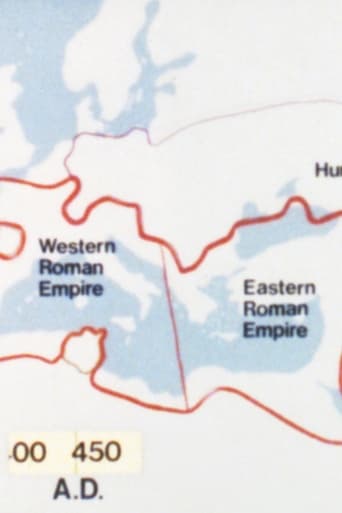Atlas: A Sketch of the Rise and Fall of the Roman Empire
5.5
History
Rated:
1976
0h2m
On:
Country:
Atlas gives the viewer an overview of the rise and fall of the Roman Empire. Beginning in 500 BC, a time clock at the bottom of the screen marks off the years – eight to a second – as the boundaries on the animated map change, showing both the growth including the conquests of Alexander the Great, as well as the decrease as the power of the Romans declined. The film concludes with the invasion of the Huns and the sack of Rome in 476 AD. Music by David Spears. Atlas gives the viewer an overview of the rise and fall of the Roman Empire. Beginning in 500 BC, a time clock at the bottom of the screen marks off the years – eight to a second – as the boundaries on the animated map change, showing both the growth including the conquests of Alexander the Great, as well as the decrease as the power of the Romans declined. The film concludes with the invasion of the Huns and the sack of Rome in 476 AD. Music by David Spears. Atlas gives the viewer an overview of the rise and fall of the Roman Empire. Beginning in 500 BC, a time clock at the bottom of the screen marks off the years – eight to a second – as the boundaries on the animated map change, showing both the growth including the conquests of Alexander the Great, as well as the decrease as the power of the Romans declined. The film concludes with the invasion of the Huns and the sack of Rome in 476 AD. Music by David Spears. Atlas gives the viewer an overview of the rise and fall of the Roman Empire. Beginning in 500 BC, a time clock at the bottom of the screen marks off the years – eight to a second – as the boundaries on the animated map change, showing both the growth including the conquests of Alexander the Great, as well as the decrease as the power of the Romans declined. The film concludes with the invasion of the Huns and the sack of Rome in 476 AD. Music by David Spears.



 AD
AD